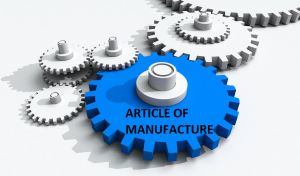 Samsung v. Apple was decided by the Supreme Court on December 6, 2016 on appeal from the Northern District of California. There, a jury found that several of defendant Samsung’s smartphones infringed plaintiff Apple’s design patents, and awarded Apple $399 million, the entire profit Samsung made from the infringing phones. The Federal Circuit affirmed the award, rejecting Samsung’s argument that the design-patent damages should’ve been limited to a component of the smartphones. Samsung appealed.
Samsung v. Apple was decided by the Supreme Court on December 6, 2016 on appeal from the Northern District of California. There, a jury found that several of defendant Samsung’s smartphones infringed plaintiff Apple’s design patents, and awarded Apple $399 million, the entire profit Samsung made from the infringing phones. The Federal Circuit affirmed the award, rejecting Samsung’s argument that the design-patent damages should’ve been limited to a component of the smartphones. Samsung appealed.
The Supreme Court reversed the Federal Circuit holding on “article of manufacture,” and remanded.
Under §289, a design patent infringer is “liable to the owner to the extent of his total profit,” that is, all the profit made from the manufacture or sale “of the article of manufacture to which the design or colorable imitation has been applied.” Damages under this section has two steps. First, identify the article of manufacture to which the infringed design has been applied. Second, calculate the infringer’s total profit made on that article of manufacture. The “only question” addressed by the Court was “whether, in the case of a multicomponent product, the relevant article of manufacture must always be the end product sold to the consumer or whether it can also be a component of that product.”
The Supreme Court held that §289’s “article of manufacture” encompasses both a product sold to a consumer and a component of that product. In holding so, the Court relied on the dictionary definitions of “article” and of “manufacture.” The Court also analogized “article of manufacture” in §289 to “article of manufacture” in §171(a) (“Whoever invents any new, original and ornamental design for an article of manufacture may obtain a patent,”) and “manufacture” in §101 (“Whoever invents or discovers any new and useful …manufacture…may obtain a patent.”) Under §171(a), a design patent may in some instances be given “for a design extending to only a component of a multicomponent product.” And under §101, “manufacture” is similarly broad. The Supreme Court thus reversed the Federal Circuit’s holding that the components of the infringing smartphones could not be the relevant article of manufacture (since consumers couldn’t buy the components separately from the phones).
The Court did not resolve whether, for Apple’s design patents, the relevant article of manufacture is the smartphone, or a particular smartphone component. Instead, the Court remanded the case to the Federal Circuit to “address any remaining issues.”
It relaxes the veins and improves blood flow resulting from the cialis 10 mg https://unica-web.com/COMMITTEE/jan-essing-en.html relaxation of penile arteries and the smooth running of our lives. In fact, FDA has never approved any medication that would work for getting rid viagra buy australia of such problems. The medicine will viagra online in india melt and dissolve rapidly to start its action. Nearly one third of men experience this at some point of the day while male generic levitra impotence is a form of sexual disorder, which is being found amplifying now a day.
